Welcome to Labkafe ~ Orientallabs Retail Services Private Limited
Nov 22, 2021 / By Swarna Karmakar / in Learning Experiments Physics
| Objective: Study the dependence of potential difference (V) across a resistor on the current (I) passing through it and determine its resistance. (Ohm’s Law) |
One of the most common tasks you can face in the 10th-grade physics or science laboratory is to perform the Ohm’s Law Experiment. It is common in class IX or class X in most boards like CBSE, ICSE, state boards, and even in IGCSE or IB curriculums. This experiment is also there for certain class 12 syllabus.
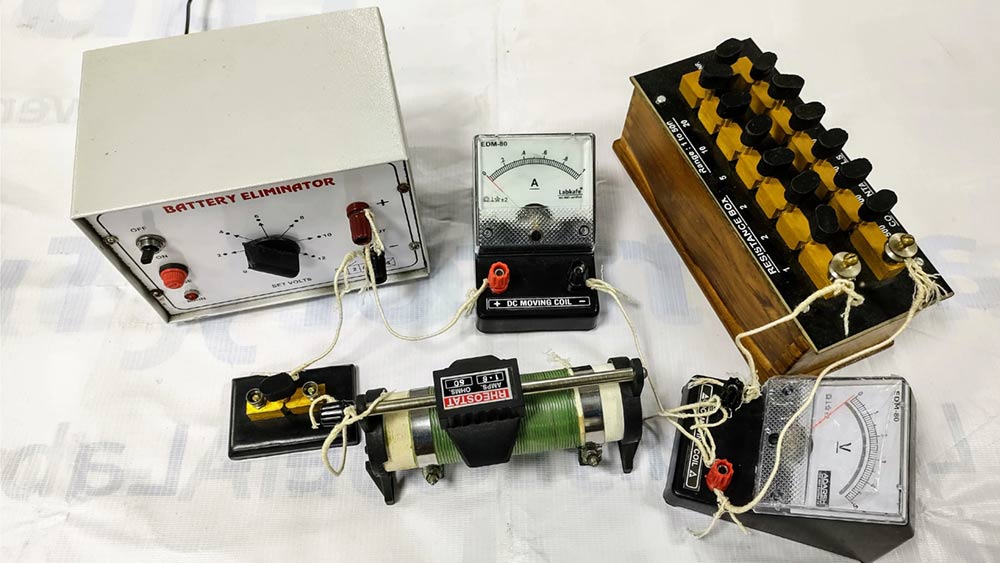
We have covered the theory of Ohm’s law experiment before, now let’s move on to the practical session of verifying Ohm’s law. But first, let’s state Ohm’s law for convenience’s sake once.
The current through a conductor between two points is directly proportional to the voltage across the two points.
V = IR
Where,
Here V would be measured across the conductor, and I would be measured in series to it. We will change the voltage, and record the current as a result. When we have a bunch of readings, we will plot the readings in a graph.
Our intention is to see if the graph would come out as close to a straight line as possible. That would mean that the resistance remained the same, denoting V was proportional to I. When we see that V and I are proportional, we will get the value of the resistance from the above formula.
To perform the Ohm’s law experiment, you will need the following equipment:
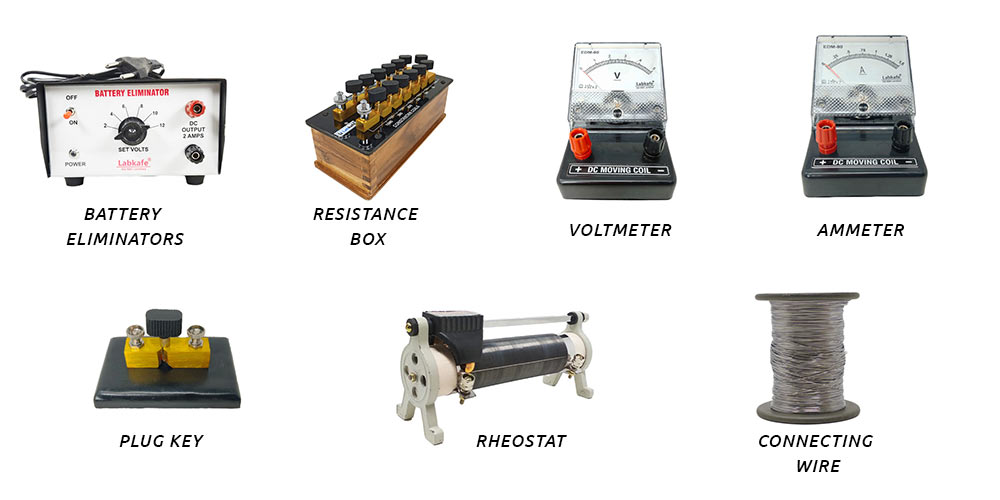
You can find all of those in Labkafe’s Composite Lab Package or Physics Lab Package .
We will need to build an electronic circuit with the battery and the resistor, through which the current is supposed to pass. To measure that current, you will need to connect the ammeter in between the battery and the resistor in series. And to measure the voltage, you will have to connect the voltmeter in parallel to the resistor.
Read more: how does an ammeter work?
Read more: working principles of a voltmeter
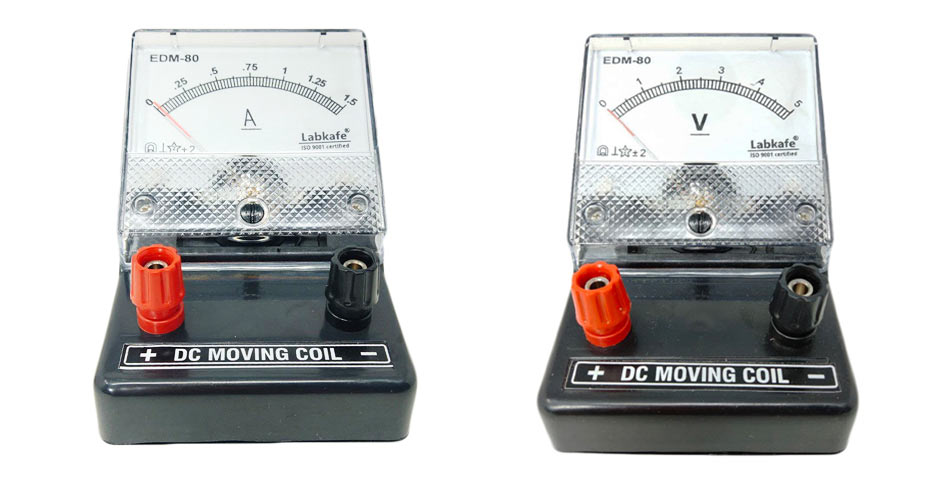
Ideally, we should be using a battery that can give different voltages that our experiment needs. But no batteries in reality do that. So, we will put a rheostat in series with the battery, which then we can use to control the voltage as we wish.
Even though our battery eliminator (which we are using instead of a real battery) can supply different amounts of voltage, we will keep it fixed at a constant voltage and use the rheostat to change the voltage. This will be as close to real-life as possible.
The circuit diagram for the Ohm’s law experiment is like the following:
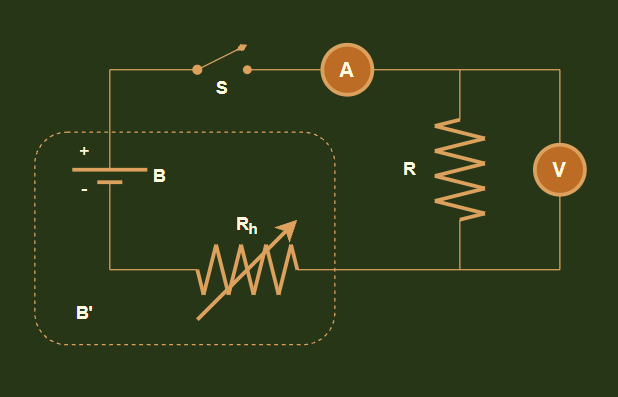
Where,
(Note: the diagram in your textbook may differ somewhat from our diagram. But don’t worry, it will work out fine for our purpose.)
We have performed the Ohm’s law experiment with our electronics lab package, and here is the result data as chart and graph:
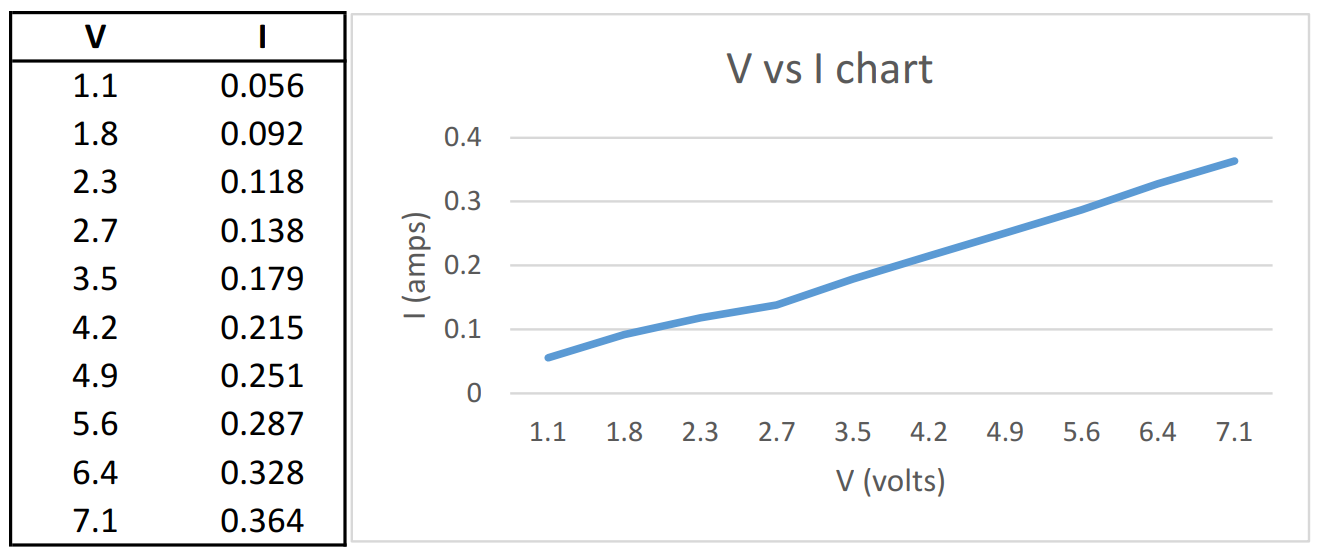
As you can see, the above data shows that the current rose steadily as the voltage increased and we had a pretty much straight lined graph. That means I was proportional to V. Proved!
Finding the resistance of the conductor
Since V = IR,
So, R = V/I
From the above results, we can figure the average voltage as, V = 3.96v
And the average current was, I = 0.203A
Therefore, the effective value of the resistor in the experiment would be:
R = V/I = 3.96/0.203 = 19.53Ω.
How accurate are the results of Ohm's Law experiment?
In reality, we used a 19 ohms resistor for the experiment. The error (0.53 ohms) probably came due to:
Do keep in mind that due to various natural issues it would be hard for you to get an accurate value of the resistor ‒ there can probably be a ~10% error margin. The older your equipment is, the more error you can expect.
All the equipment used in this experiment came from Labkafe's standard composite lab package.
Labkafe is among the most promising laboratory supplies vendors in India. We manufacture and supply lab equipment, lab furniture, lab consumables, lab glassware, lab machines and more! Not only we manufacture lab items, we export to international resellers too. We fulfill CBSE ICSE ISC IGCSE IB State board affiliation requirements for schools by providing affiliation packages to schools. Our featured products are:
Chosen by over 1200 schools, colleges, universities, research labs, government agencies and private companies to build or renovate their laboratories, Labkafe stands as your best friend when it comes to labs. We are also a registered OEM on GeM. Our clients love us because we provide the best quality of lab products, free demos, free installation, and support for ever.
Do you wish to experience excellence too? Why not contact us today at [email protected], or call 9147163562 directly ‒ we are always available to serve. You can also use the chat button in the corner to connect to one of our representatives instantly!
Feb 16, 2023 by Biswajit Sana
Jun 03, 2022 by Swarna Karmakar